Results
-
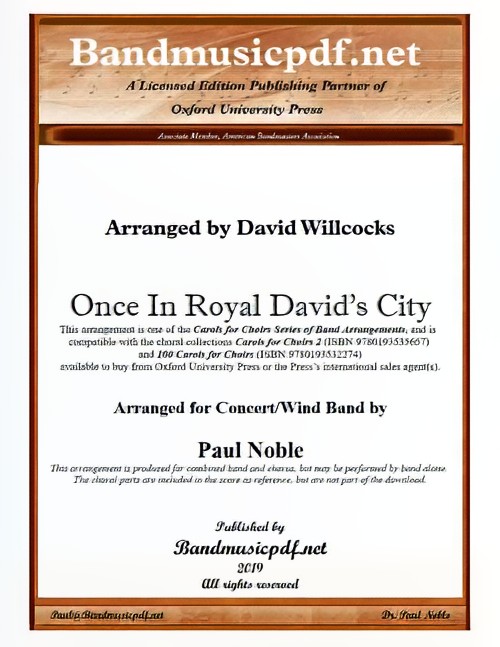 £75.00
£75.00Once in Royal David's City (Concert Band with Optional Choir - Score and Parts) - Noble & Willcocks
Once in Royal David's City is a Christmas carol originally written as a poem by Cecil Frances Alexander. The carol was first published in 1848 in her hymnbook Hymns for Little Children. A year later, the English organist Henry John Gauntlett discovered the poem and set it to music. According to The New Oxford Book of Carols, the text was conceived by Cecil Alexander after overhearing a group of her god children complaining about the dreariness of the catechism. Cecil masterfully took doctrines from the Apostle's Creed and simplified them for her hymns. Cecil wrote about 400 hymns in her lifetime, among which are All things bright and beautiful and There Is a Green Hill Far Away. She used the money for charitable purposes, and was a tireless advocate (and visitor) of the poor and sick. Henry John Gauntlett had spent the first half of his career as a lawyer before abandoning his practice to pursue music. He served as the organist at a number of leading London churches. Gauntlett was a prolific writer and is said to have composed over 1000 hymn tunes. He made tremendous contributions to the world of music, even inventing mechanical improvements to the organ. As a result, he was praised by the famous Felix Mendelssohn and was awarded an honorary doctorate in music from the Archbishop of Canterbury. In 1919, Arthur Henry Mann, organist at King's College (1876-1929), introduced an arrangement of Once in Royal David's City as the processional hymn for the service. In his version, the first stanza is sung unaccompanied by a boy chorister. The choir and then the congregation join in with the organ on succeeding stanzas. This has been the tradition ever since. It is a great honor to be the boy chosen to sing the opening solo--a voice heard literally around the world. In this arrangement for band accompaniment, the first five verses may be performed as directed by the conductor, with different groupings of instruments for each verse, i.e., Vs.1, A cappella; Vs. 2, Fl., Oboe, E.H., Bsns; Vs. 3 Cl., Saxes; Vs. 4, Brass; Vs. 5, All, and Vs. 6 as written with featured descant. This arrangement is one of the Series of Band Arrangements compatible with the David Willcocks Carols for Choir, Book 2 (#31).
Estimated dispatch 7-14 working days
-
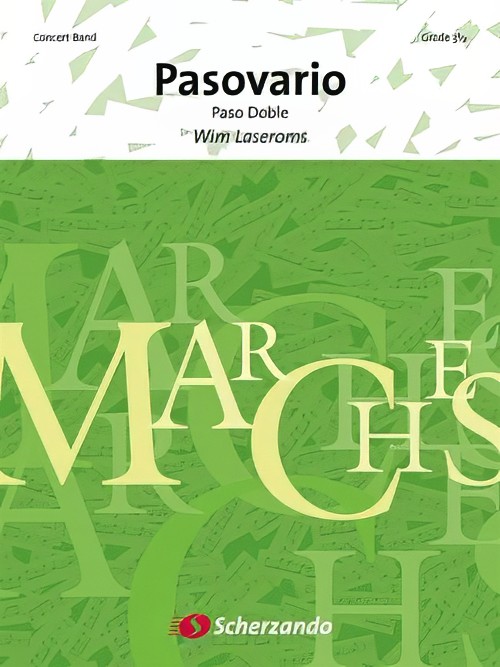 £76.99
£76.99Pasovario (Concert Band - Score and Parts) - Laseroms, Wim
The compound title of this work reflects its musical content. 'Vario' refers to the two different meters - 3/4 and 2/4 - in which this paso doble has been written. The compact, powerful opening is in 3/4 time: it is followed by a melodic, cantabile second theme, in the beautiful chalumeau register, in 2/4 time. This refreshing piece sets a great tone for your concert!Duration: 3.10
Estimated dispatch 7-14 working days
-
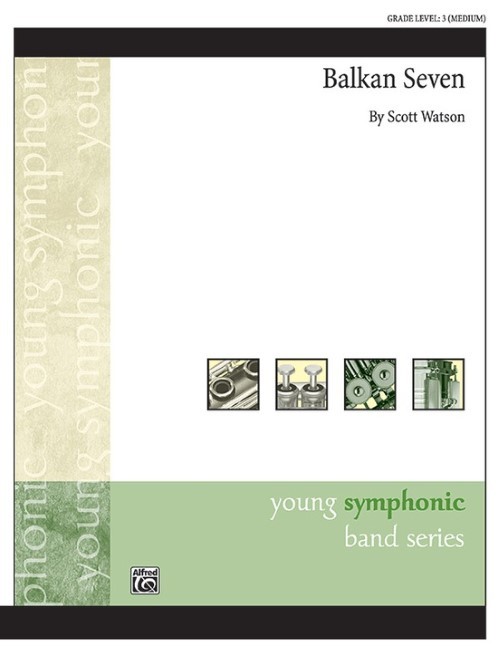 £66.95
£66.95Balkan Seven (Concert Band - Score and Parts) - Watson, Scott
Balkan Seven gets its inspiration from the lively dances of the Balkan region of Southeastern Europe encompassing Greece, Bulgaria, Macedonia, Serbia, and Croatia. 7/8 is the most popular uneven dance rhythm in all of Balkan music, especially in Macedonia, where a line dance with a 3+2+2 subdivision is prevalent.
Estimated dispatch 7-14 working days
-
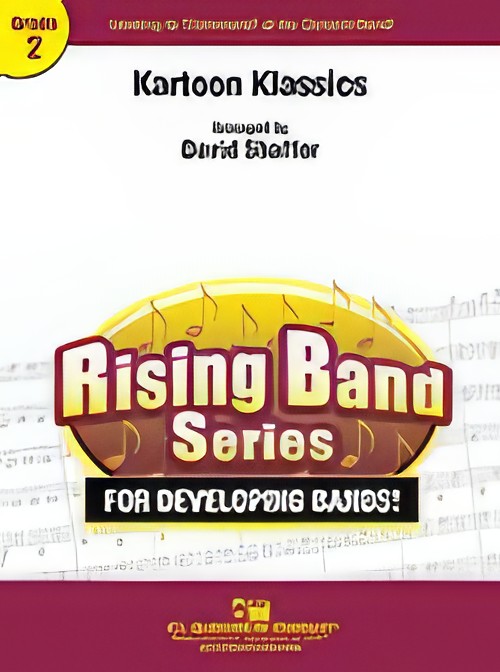 £49.00
£49.00Kartoon Klassics (Concert Band - Score and Parts) - Shaffer, David
We all know and love the wonderful characters from the classic cartoon adventures of yesteryear. David Shaffer has crafted this clever reincarnation of music from those classics. Opening with Brahms' "Hungarian Dance #5" we can all imagine our favorite cartoon rabbit in his many adventures and mis-adventures. With Wagner's "Ride of the Valkyries" we hear his death defying escapes from his adversaries. Finally, Liszt's "Hungarian Rhapsody #2" gives us the musical tension that brought these cinematic classics to their comic conclusions. Multiple percussion effects and clever instrumental writing will make this a favorite for years to come. Very entertaining! Duration: 2.00
Estimated dispatch 7-14 working days
-
 £66.95
£66.95Escape from Dead Raider's Hollow (Concert Band - Score and Parts) - Bell, Jeremy
"Escape from Dead Raider's Hollow" is a fast-paced adventure. Opening quietly, the introduction gradually builds in volume and energy up to a tempo change where the piece takes off and doesn't relent until the end. Combining rhythms of 3 over a pulse of 2 creates a hemiola effect that drives the piece forward, creating a feeling of anxiety and being chased. This is a bombastic, action-packed piece with loud percussive hits, huge brass, and soaring woodwinds that ends with a bang.Duration: 2:45
Estimated dispatch 7-14 working days
-
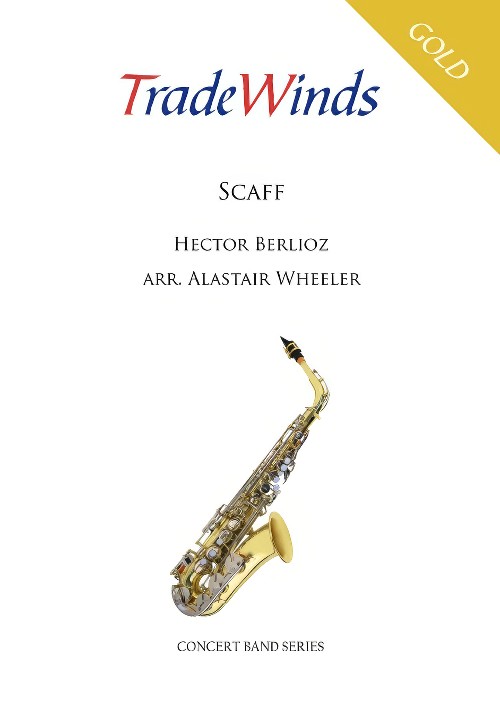 £69.95
£69.95Scaff (Concert Band - Score and Parts) - Wheeler, Alastair
This clarinet sonata was composed in 1894 for clarinetist Richard M?hlfeld. This was an interesting time in Brahms' life as he vowed he would retire from composing in 1890 but after he heard a performance of the Weber clarinet concerto no. 1 and the Mozart clarinet quintet he so admired the soloist that he felt he should come out of retirement and compose 2 clarinet sonatas for him. These were completed in 1894 and first performed in a private concert in September of that year. These 2 sonatas were the last chamber pieces he composed before his death.
Estimated dispatch 7-14 working days
-
 £13.95
£13.95Scaff (Concert Band - Score Only) - Wheeler, Alastair
This clarinet sonata was composed in 1894 for clarinetist Richard M?hlfeld. This was an interesting time in Brahms' life as he vowed he would retire from composing in 1890 but after he heard a performance of the Weber clarinet concerto no. 1 and the Mozart clarinet quintet he so admired the soloist that he felt he should come out of retirement and compose 2 clarinet sonatas for him. These were completed in 1894 and first performed in a private concert in September of that year. These 2 sonatas were the last chamber pieces he composed before his death.
Estimated dispatch 7-14 working days
-
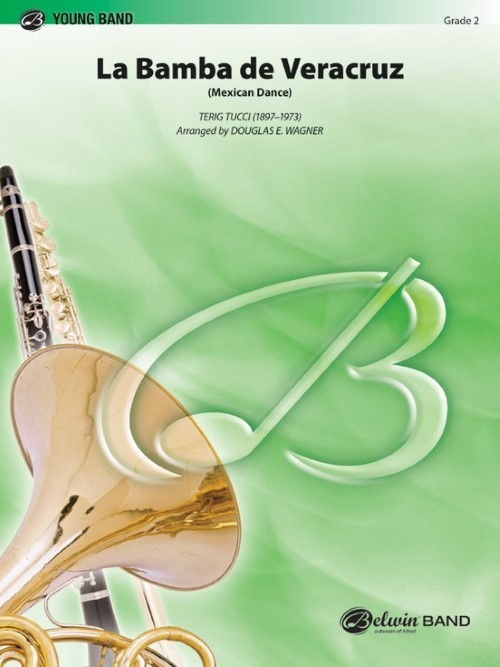 £58.50
£58.50La Bamba de Veracruz (Concert Band - Score and Parts) - Tucci, Terig - Wagner, Douglas E.
From Mexico's central Gulf coast, this indigenous Mexican Dance is so endeared that some consider it the state song. Brush up on your 2/4, and put on your dancing shoes! Freshly scored for the developing band, this familiar tune provides an energetic boost to any program.Duration: 2:45
Estimated dispatch 7-14 working days
-
 £95.00
£95.00Spanish Dance (from The Gadfly) (Concert Band - Score and Parts) - Shostakovich, Dmitri - Curnow, James
Originally composed for the movie The Gadfly, this brilliant dance number was later included in the Suite for Variety Orchestra No.2. Carefully crafted in this adaptation for symphonic band, this is an exciting and explosive work suitable as an opener or encore selection.Duration: 2:40
Estimated dispatch 7-14 working days
-
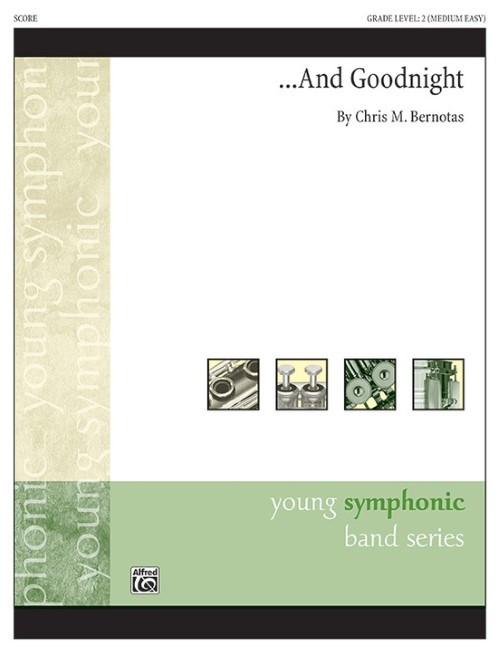 £58.50
£58.50...And Goodnight (Concert Band - Score and Parts) - Bernotas, Chris M.
...And Goodnight is a grade 2 lyrical piece that would be a beautiful addition to any school music library. It was inspired by a Brahms lullaby; hints of it are heard throughout the piece and within the original melody. Ranges and rhythmic difficulties are modest which will allow for ample time in teaching the valuable musical concepts of phrasing, tuning, balance, dynamics, and most of all, expression.Duration: 2.45
Estimated dispatch 7-14 working days
